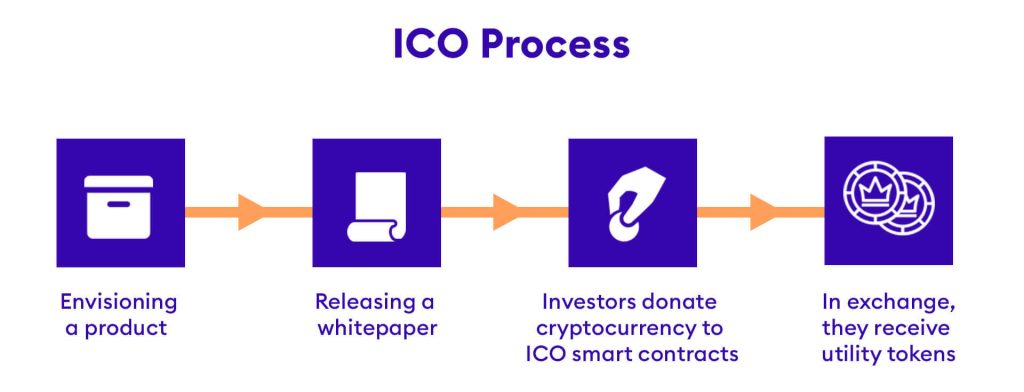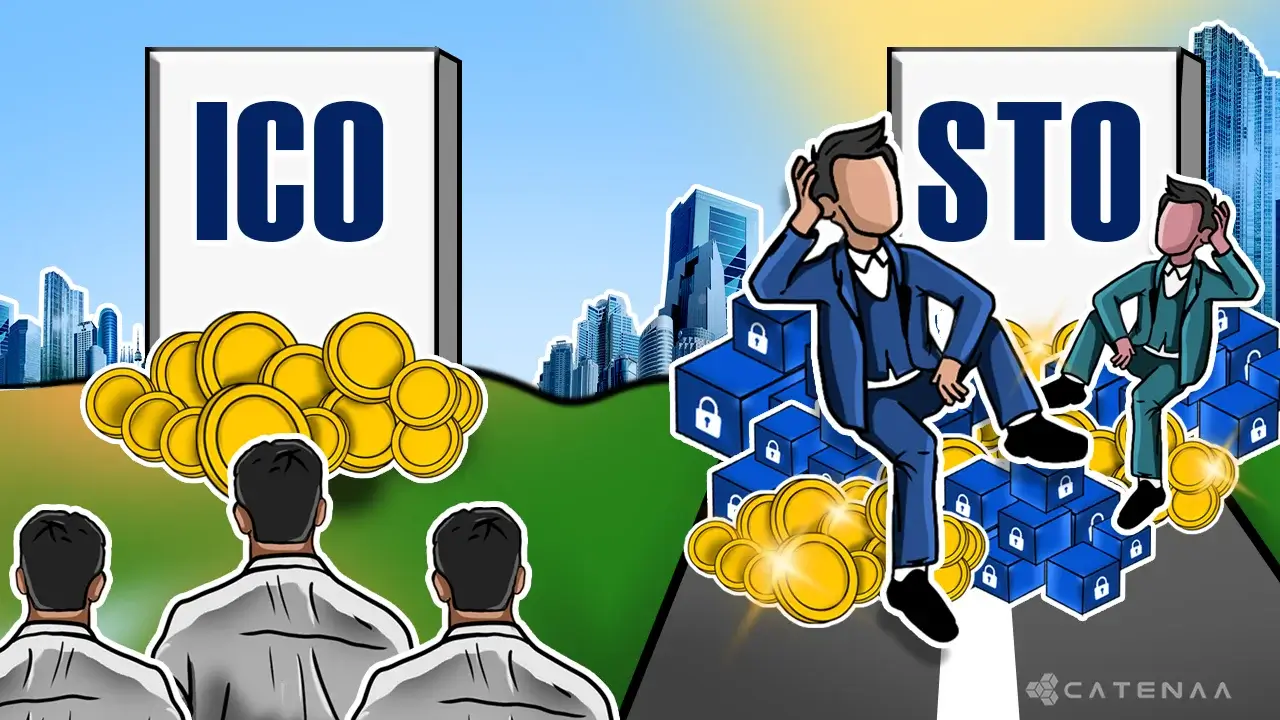In the fast-expanding field of cryptocurrency and blockchain technology, Initial Coin Offerings (ICOs) and Security Token Offerings (STOs) have emerged as innovative fundraising approaches. The ICO or the STO are the Web 3 equivalents of stock market IPOs, except these use cryptocurrencies instead of Fiat money.
These approaches have transformed the way firms and startups may raise financing from a worldwide pool of investors. However, knowing the distinctions between ICOs and STOs is vital since they vary greatly in their nature, regulatory compliance, and repercussions.
How Do They Work?
ICOs and STOs, short for initial coin offering and security token offering, respectively, are fundraising strategies that leverage cryptocurrencies and blockchain technology. In an ICO, corporations issue utility tokens that investors can acquire in exchange for cryptocurrencies like Bitcoin or Ethereum. These utility tokens give access to a product, service, or platform. Conversely, STOs entail the issuing of security tokens, which reflect ownership or investment rights in a corporation, making them analogous to conventional securities.
Both ICOs and STOs have garnered tremendous appeal because of their potential to generate large funds in a short time, enabling firms to expand their operations or launch creative initiatives.
ICOs begin with a firm envisioning a product and releasing a whitepaper explaining its aims, roadmap, and utility token specifications. Investors interested in the project may then donate monies, generally in the form of cryptocurrency, to the ICO smart contract address. In exchange, customers obtain utility tokens, which they may later utilize inside the ecosystem built by the issuing corporation.

ICOs have been hailed for their accessibility, letting anybody with an internet connection engage in financing a project of their interest. However, their uncontrolled nature has also led to fraud and fraudulent schemes, making investor due diligence important.
The Rise of STOs: What Makes Them Different from ICOs?
STOs have evolved as a reaction to the regulatory issues surrounding ICOs. Unlike utility tokens, security tokens represent actual assets, like stock in a corporation, profit-sharing rights, or ownership of physical assets. Consequently, STOs are subject to securities rules, giving them a more regulated and transparent fundraising mechanism than ICOs.
Security tokens provide additional investor protection since they give legally enforceable rights and are generally backed by physical assets, decreasing the danger of possible token value manipulation.
The Legal and Regulatory Landscape for ICOs and STOs
The legality and regulatory status of ICOs and STOs vary greatly among jurisdictions. While some jurisdictions welcome blockchain technology and cryptocurrencies, others have set severe controls or outright prohibitions on token sales.
For ICOs, this legal uncertainty has led to numerous high-profile examples of regulatory crackdowns. However, STOs have worked to resolve these issues by conforming to securities laws and regulatory norms. For instance, in the United States, the Securities and Exchange Commission (SEC) offers criteria for security token sales, providing investor safety and compliance.1
Benefits and Risks of Investing in ICOs and STOs
Rewards and dangers in investing in ICOs and STOs are inherent. ICOs offer great growth potential, with early investors potentially reaping huge gains if the business succeeds. However, the absence of governmental control raises the possibility of fraud and failing initiatives, resulting in possible losses.
On the other hand, STOs provide a more secure investment alternative. Investors may earn partial ownership of real-world assets, guaranteeing more stability in the token’s value. However, the legal compliance requirements may contribute to lengthier fundraising procedures and decreased liquidity for security tokens.
Impact on the Financial Industry
ICOs and STOs have disrupted established fundraising processes, enabling new routes for enterprises and entrepreneurs to obtain funding. Tokenization of assets has the potential to change multiple sectors, from real estate to art and beyond.
As the market evolves, regulatory clarity and investor protection will be key in encouraging trust and confidence in token sales. The financial sector is actively observing these developments, and conventional fundraising techniques may adapt to include features of tokenization in the future.2
Closing thoughts…
ICOs and STOs offer two alternative ways to fundraising in the blockchain age. While ICOs provide a more accessible and flexible method for raising investment, they come with increased risks owing to their unregulated nature. On the other side, STOs give a safe and regulated investment option but may face lengthy regulatory procedures and decreased liquidity.
As an investor or entrepreneur, knowing the distinctions and ramifications of ICOs and STOs is vital in making informed choices. Evaluating the project’s whitepaper, staff, and regulatory compliance are key stages to traverse the intricacies of token sales and contribute to the hopeful future of blockchain-based fundraising.
With innovation and appropriate standards, ICOs and STOs have the capacity to unleash the real potential of blockchain technology and change the way we make investments.
- Cliffordchance: https://www.cliffordchance.com/content/dam/cliffordchance/briefings/2020/10/security-token-offerings-a-european-perspective-on-regulation.pdf[↩]
- Financemagnates: https://www.financemagnates.com/cryptocurrency/interview/icos-and-ieos-beware-stos-are-the-future-of-fundraising/[↩]


